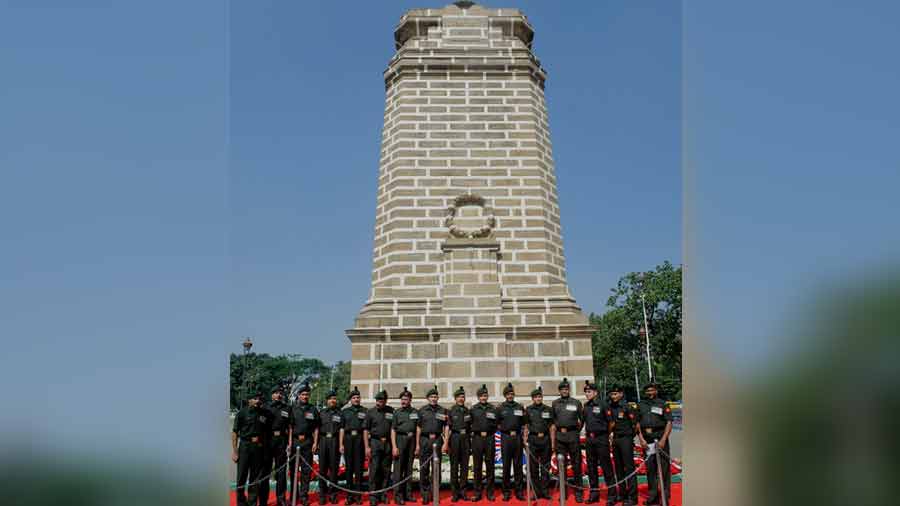There are many interesting things to see when one visits the Flagstaff House at Barrackpore. Apart from the main summer residence of the governor, the semaphore tower and the numerous statues from the British era, there is another very interesting building out here. Classically resembling a Greek temple, there is a cenotaph out there on the Flagstaff House compound. This cenotaph was constructed on the orders of Lord Minto, who was then the Governor-General of the Presidency of Fort William, between 1807-1813.
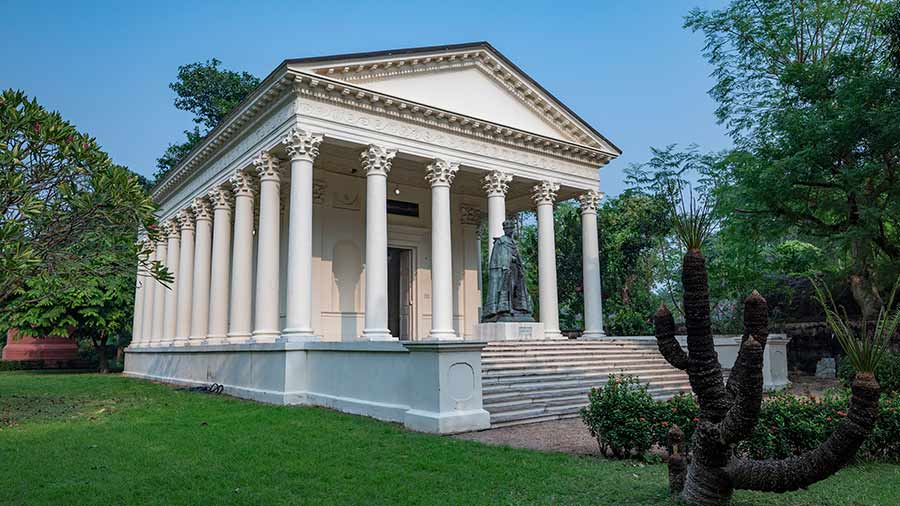
Another biew of the cenotaph at Flagstaff House in Barrackpore
The cenotaph was constructed as a memorial to the fallen officers of the battle of Java and Isle de France between 1810 and 1811. Isle de France, what we now know as Mauritius, was under the French and it was often used as a base to disrupt trade by attacking British ships ferrying goods from the east to Europe. Isle de France was liberated from the French and was renamed back to its original name, Mauritius.
After liberating Mauritius, the British turned their attention toward the Dutch East Indies. Java was a titular colony of the French, but was Dutch-administered and also defended by them. The action lasted between August to September of 1811 and Java was also liberated.
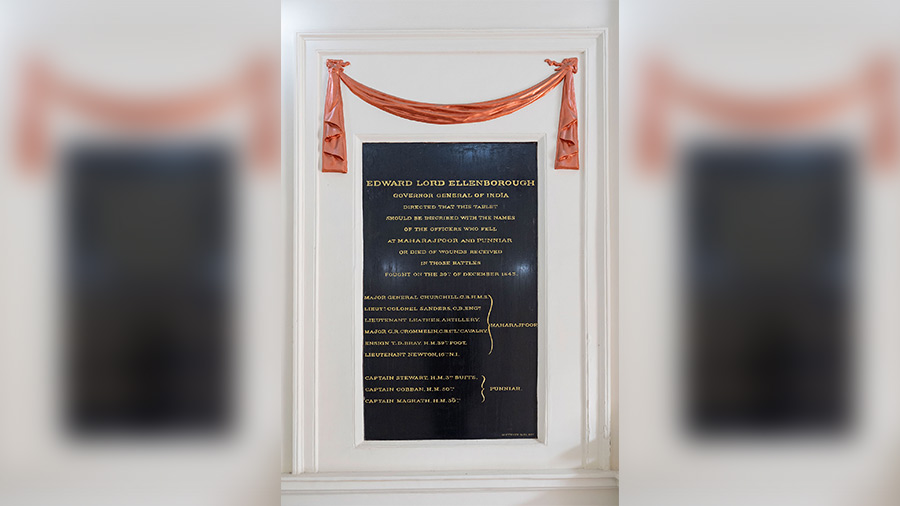
The first plaque on the south wall is dedicated to fallen officers at Maharajpur And Punniar
Later, in the year 1844, an additional tablet was installed by Lord Ellenborough at the cenotaph. This was done to commemorate the fallen officers at Maharajpur and Punniar in Gwalior (Madhya Pradesh). This was not the only commemoration that was done for the fallen officers at Gwalior, another monument was also constructed in Calcutta (Kolkata) near Fort William facing the Hooghly River. This monument is still very much present and this is what we now know as the Gwalior Monument.

Statue of Captain Sir William Peel
The cenotaph at Flagstaff House has been constructed on a raised platform and right in front of it is the statue of King George V. At the front and at the back, six Corinthian pillars are supporting the roof while on each side there are eight such pillars.
There is a marble statue on the north side of the building. This statue is that of Peel (Captain Sir William Peel VC KCB 1824-1858). He was the son of Sir Robert Peel, who served twice as Prime Minister of the United Kingdom (1834–1835 and from 1841–1846). Interestingly, Captain Sir William Peel was a highly decorated officer. He was the captain of the Royal Navy and had served during the Crimean War. He was on his way to China when he was requested to stop and help quell the uprising in India. He had played a very significant role in Lucknow, but unfortunately died in Kanpur due to smallpox. This marble statue was originally installed at Eden Gardens but later shifted to Barrackpore along with other colonial statues which were removed from the city.
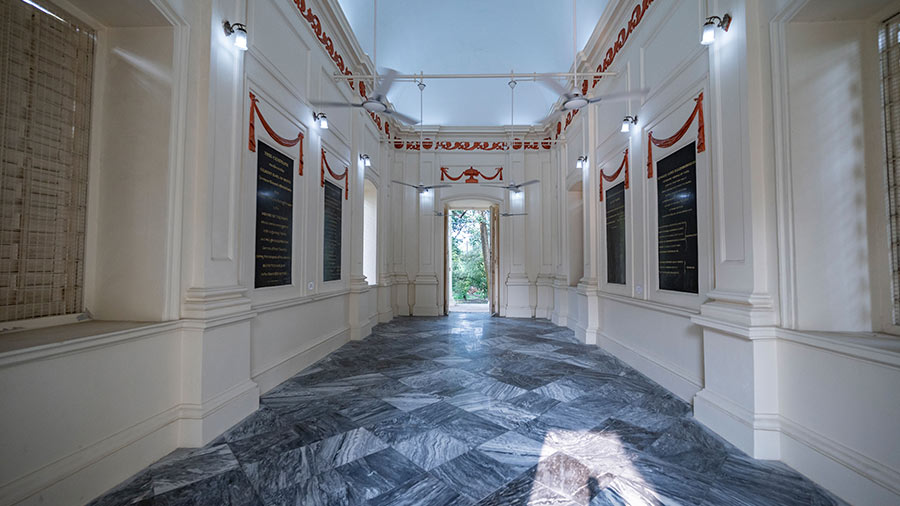
The room inside the cenotaph at Barrackpore
There is a single room with its front entrance right behind the statue of King George V. On top of the doorway, there is a signage that reads “To the memory of the Brave – Erected A.D. 1813”. Once you enter through the door you will find yourself inside a rectangular room with marble flooring.
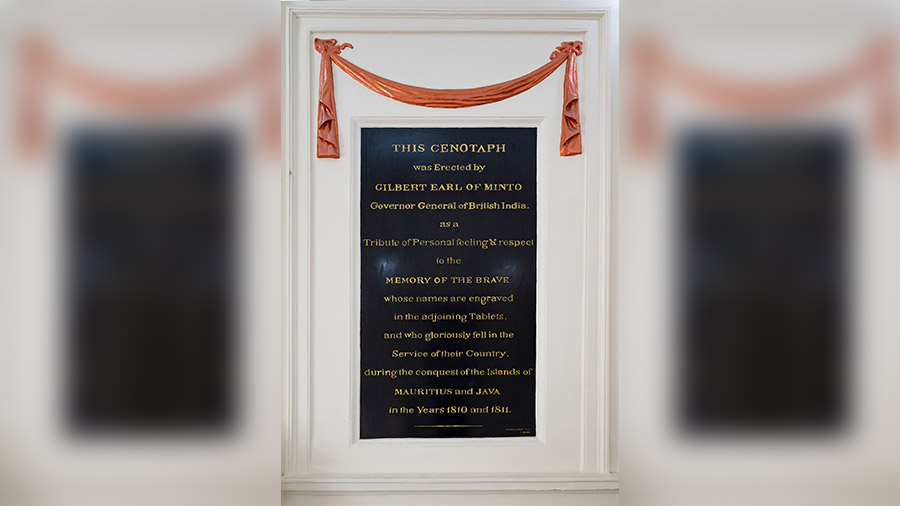
The first plaque on the north wall is dedicated to Gilbert Earl of Minto
There are four marble plaques on the walls in this room, two on the north wall and the other two on the south wall. The first plaque on the north wall is dedicated to Gilbert Earl of Minto, who had initiated the construction of this memorial. The second plaque on the north wall details the names of the twenty-one officers who had fallen during the conquest of Java.
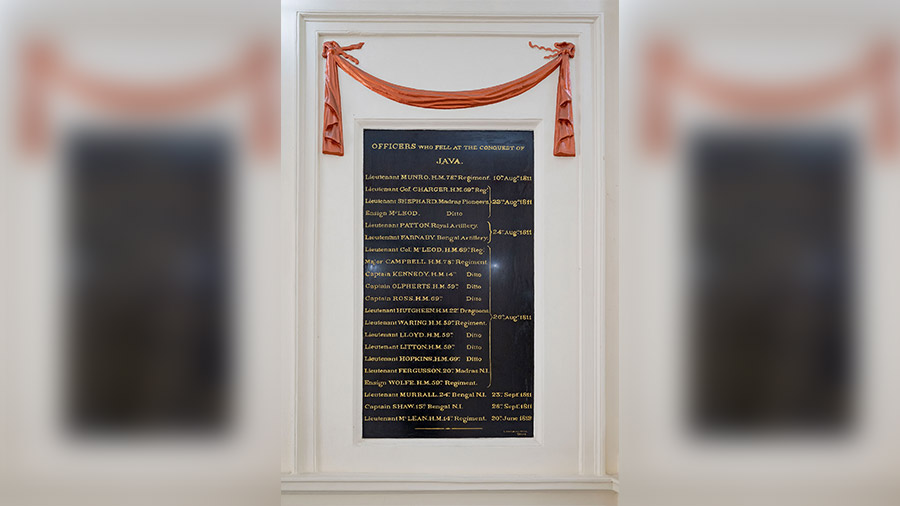
The second plaque on the north wall, dedicated to fallen officers during the conquest of Java
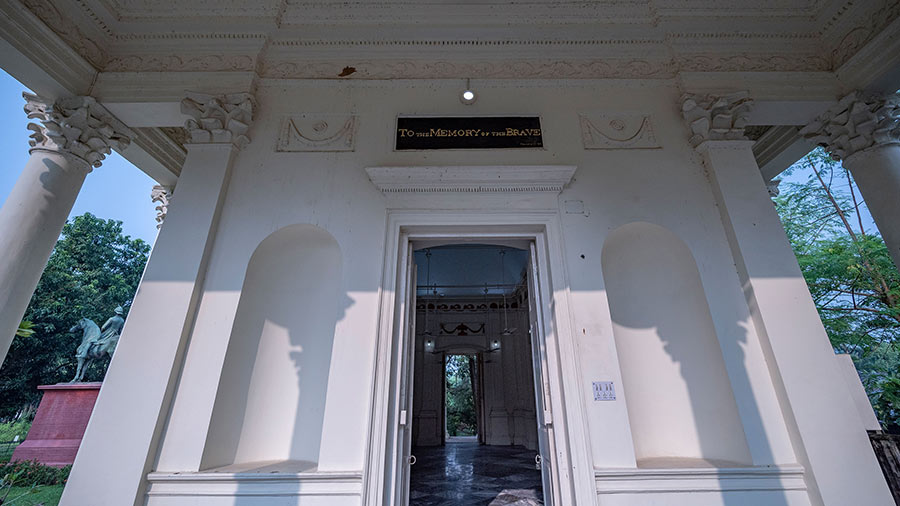
Main doorway of the cenotaph
On the south wall, the first plaque is dedicated to six fallen officers at Maharajpur and three fallen officers at Punniar. This plaque also mentions Edward Lord Ellenborough upon whose instruction this plaque was installed. The second plaque on this wall lists three officers, who had fallen during the conquest of the Isle of France.
The cenotaph is surrounded by beautiful gardens making it a very peaceful place to commemorate those who sacrificed their lives away from their homeland to serve their nation.
How to visit
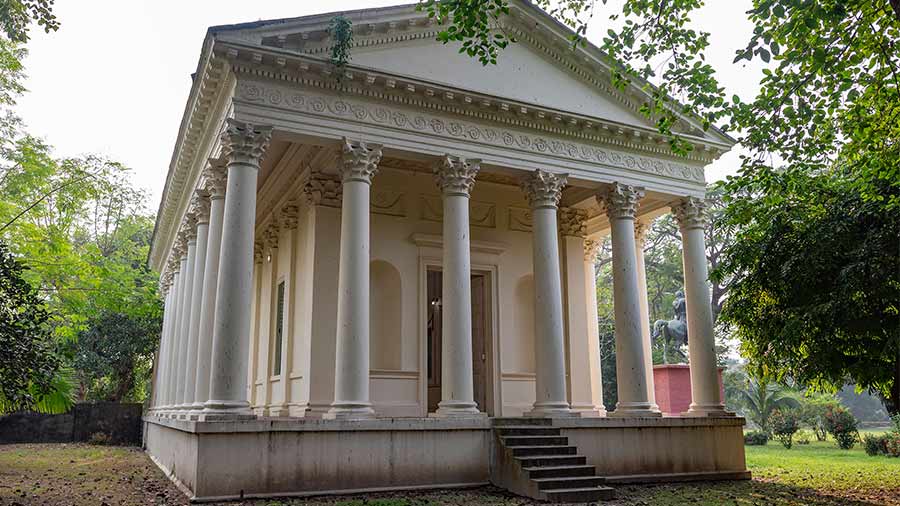
Back of the cenotaph
- This building is within the Flagstaff House compound in Barrackpore, thus you would need prior permission from the Governor House in Kolkata to visit this place.
- Several statues were once installed all across Kolkata and were later shifted here to keep in with the sentiments of removing anything with a colonial past. Do read about the statues before you go as there is no information board and just a small plaque with the names.
- There is also a semaphore tower out here, these were used for communication and similar towers were present across a vast portion of eastern India. Some of which still can be seen standing.
Working for more than a decade in the book retail and publishing industry, Subhadip Mukherjee is an IT professional who is into blogging for over fifteen years. He is also a globetrotter, heritage lover, and photography enthusiast.


